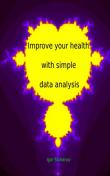
Problem
Many people experience side effects from using properly prescribed (by doctors) drugs or medical treatments. About 170 million Americans take prescription drugs. About 1.9 million are hospitalized each year from properly prescribed drugs. About 128,000 Americans die each year from properly prescribed drugs. The European Commission estimates that about 200,000 Europeans die each year from properly prescribed drugs. The main reasons for these deaths are because of incorrect dosage (overdose) and adverse side effects from properly prescribed (by doctors) drugs.
Simple Solution
A simple solution to this problem would be to teach patients an easy way to adjust dosage, timing, and compositions of drugs to reduce side effects and avoid overdose. This is the purpose of this book.
Readers of this book will learn examples of how to:
· adjust dosages of drugs to reduce side effects and increase efficiency of treatments;
· how to select the best timing for administration of drugs;
· how to optimize compositions of ingredients;
· how to select optimal combinations from different treatments of a medical condition;
· how to tune medical treatments to personal biological rhythms.
In chapter 1, simple principles of how drugs work are introduced.
In chapter 2, methods of dosage adjustments are described and demonstrated using three examples.
In chapter 3, shows how to determine best times for taking consecutive dosages of drugs.
In chapter 4, optimization of compositions and combinations are demonstrated.
In chapter 5, how to integrate traditional medical treatments, such as drugs and medical procedures with non-traditional approaches, such as herbs, minerals, oils, acupuncture, acupressure, physical exercise practices (yoga, tai-chi, qi-gong, ayurveda, etc.), breathing techniques, biofeedback, meditation, prayer, light therapy, audio therapy, color therapy, homeopathy, hypnosis, self-assertions, neuro-linguistic programming, etc. are discussed.
In several medical studies research has found that aspirin taken at one particular time may be in an active state in a patient's blood for twice as much time as when it is taken at another time.
In another study on mice, research observed that the same drug administered to the mice at particular times results in fast healing. But the same drug administered at a different time results in a worsening condition.
These examples shows that tuning medical treatments to our biological rhythms is an important aspect of the whole approach to our treatment of medical conditions.
In chapter 6 gives some examples of how to tune medical treatments to our biological rhythms.
In appendices 1-4, scripts to do automatic calculations, described in the book, are presented.
Book Details
Genre:
- Nonfiction
Age Level:
- Adult






